From trail running shoes to mountaineering boots, there are a plethora of footwear for your adventures. But which is right for you? And how do you go about choosing one?
While our Singaporean sons may not have much choices when it comes to a good pair of hiking boots, most of us do. With countless variations and models in the market however, finding the right pair can be a long and tedious process for the inexperienced.
Undoubtedly, hiking shoes can make or break your experience, whether it is a short hike to the summit of Bukit Timah Hill or a thousand mile journey across the Pacific Crest Trail.
A good-fitting pair can leave you finishing the trail with smiles and wonderful memories while a poor-fitting one will leave you battered with blisters and mentally scarred. Hence it is imperative to select a pair of hiking shoes that best fit your use.
In this article, we will break down the types of hiking shoes and offer tips on choosing the right one for your next adventure.
1. Trail Running Shoes
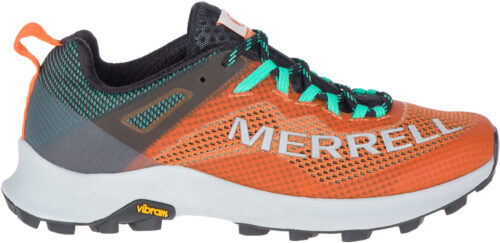
If you are going for a jog in the woods, check out trail running shoes. Designed for running on dirt and rough trails, the aggressive thread pattern on the outsoles provide the necessary traction for running on mud and wet grounds while offering the flexibility and lightness of a running shoe.
Some of the big brands such as Nike offer off-road versions of their popular road-running shoes so do check them out if you are into both fashion and function.
Use when:
Going for a run in the woods or a day hike.
2. Hiking Shoes (Low-Cut)
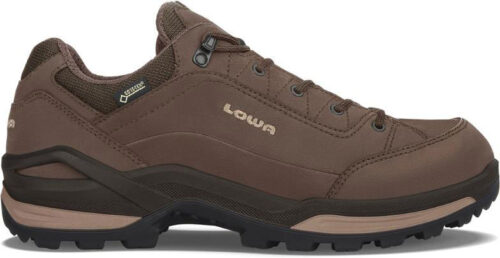
If you are one who prefers a relaxing hike in the mountains, go for a low-cut hiking shoe. A souped up version of the trail running shoes, hiking shoes feature the same low-cut design but are much heavier and sturdier to cope with the brutal conditions that you may face on your hikes.
Use when:
Day hikes or short-distance hikes with a small load
2. Hiking Boots(Mid-Cut & High-Cut)
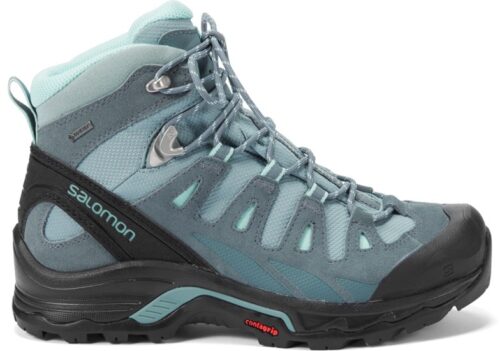
Last but not least, if you are going on a long distance trek with a heavy load (>5kg), hiking boots are an absolute necessity.
With its distinctive high boot cuffs and metal lacing hook, they provide the necessary ankle support when carrying a heavy load and navigating across uneven terrain. The added protection also protect the ankles from cuts and bites while keeping out pebbles and dirt.
With that said, high-cut hiking boots are clunky and for the inexperienced, walking with it on a flat road is a workout in itself.
Mid-cut boots—a hybrid of the low-cut and high-cut design—offers a good blend of protection and freedom of movement.
Use when:
Long-distance hikes or hikes with heavy load
4. Mountaineering Boots
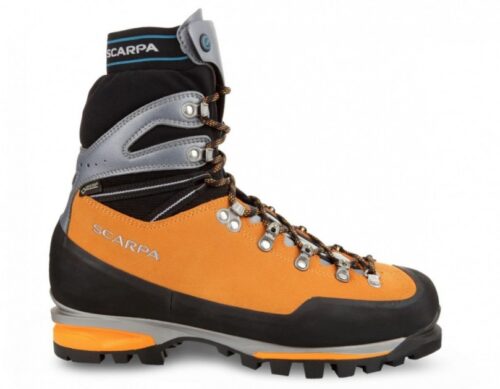
Looking to conquer Mount Denali or even Mount Everest? You will definitely need a pair of these mountaineering boots.
Designed to cope with sub-zero weather and icy terrains, these boots are a must have for those engaging in high altitude and mountaineering activities.
However, they are much more expensive — priced between USD$500 to USD$1,500 — and are not suggested for the average hikers due to their stiffness and heavy weight.
Use when:
High-altitude mountaineering or ice-climbing
5. Approach Shoes
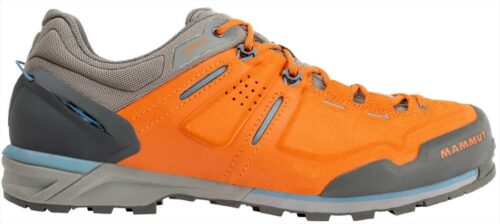
Approach shoes have propped up in recent years to cater to changing needs of outdoor adventurers.
Approach shoes are hybrid shoes that offer the characteristics of both hiking shoe and rock-climbing shoe. The outsoles are designed like climbing shoes with sticky rubbers and rigid soles while the shape of the shoe resembles that of a hiking shoe. This makes them stiff and less comfortable than hiking shoe but much more versatile due to the increased grip.
Use when:
Rock climbing and hiking
Choosing the Right Shoe
Now that you have an understanding of the different types of shoes and their preferred use, what do you need to take note of when choosing one?
Material
Most modern hiking shoes today uses synthetic leather (polyester or nylon) due to the low cost and ease of breaking in.
Shoes that tout waterproofing capabilities incorporates waterproofing fabric such as Gore-tex to provide waterproof resistance; note the word ‘resistance’ as most shoes do not guarantee 100% waterproof.
Full-grain leather boots on the other hand, are the toughest and most ‘waterproof’ shoes in the market. However, while they work best at keeping water out, but also equally well at keeping water in. Leather boots are also heavier and less breathable than all other aforementioned materials.
Outsoles
Outsoles form the bottom layer and is the main differentiator between hiking boots and running shoes.
As rubber is the main ingredient for most outsoles, it ulitmately boils down to the pattern. Hiking outsoles are usually designed with a deeper lug (the blocks or bumps that stick out from your shoe.) to offer better traction and heel brake (a raised region at the heels) to reduces the chances of falling on steep descends.
Midsoles
Midsoles are the primary support that cushions the impact of your strides. Hiking boots generally feature a stiffer midsoles to provide better support and stability when moving across uneven terrain. There are primarily two types of material being used: ethylene vinyl acetate (EVA) and polyurethane (PU).
EVA are lighter and softer, requiring little time to break-in. Hence they are mostly used for running shoes and light footwear. In contrast, PU outsoles are stiff and durable, making them the preferred choice to produce hiking shoes.
Insoles
For a more comfortable hike, upgrade to a memory foam or gel insoles. The former is light and conforms to the foot while the latter offers greater shock absorption at the expense of added weight.
Quick Tips
- Forget about the aesthetics. Look into comfort, stability and durability as they are the factors that gets you through the long distances and uneven terrains.
- Ensure that there is wriggle room in your toe box. Toe box are hard to mould and tend not to change much even after breaking in
- For mid-cut and high-cut boots, ensure a thick and stiff ankle padding to reduce the chances of an ankle roll. To test, lace up and try rolling your ankles in a seated position.
- Wear socks that you intend to wear on your hikes. Socks of different material and thickness will vary the level of comfort and fit greatly.
- As everyone’s feet tend to swell throughout the day, got for your shoe hunt in the evening to avoid getting hiking shoes that are too tight.
- Walk around and get a feel of the shoes. Are your heels constantly lifting or floating? Heel lifts can cause chafing and blisters — something you definitely want to avoid during your treks.
All in all, there are a plethora of hiking shoes out there and each cater to a different need. It is best to recognize your use for it before deciding on a specific type. Last but not least, take the time to try out the different brands out in the market; a well-fitting pair will go a longer way than ten ill-fitting ones.
NOTE: This is not a product review and ExplorerSG is not sponsored by any brands. Pictures shown above are purely for reference.
You May Like
It seems we can't find what you're looking for.

